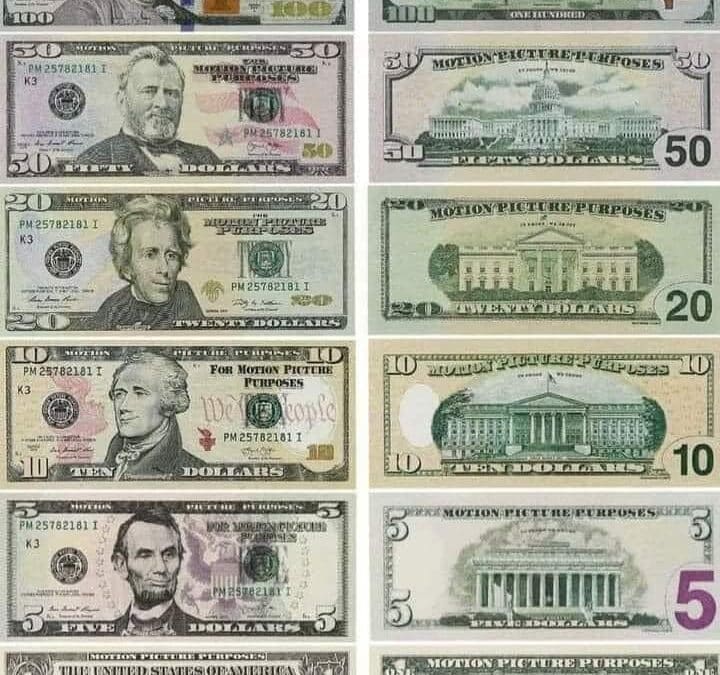There’s been a lot of talk lately about the new digital currency proposed by the Federal Reserve. That goes along with digital currencies already out there like Bitcoin, Etherium, Binance, Ripple, and many others. The key takeaway from all this is what’s the difference between digital currencies and actual in your palm cash or coin?
So, why would anybody want to use digital payments of any kind instead of cash? Let’s stop and think about this with an example.
Yes, digital currency like credit and debit cards will be convenient. You don’t have to carry cash with you. If somebody robs you they’ve got to know your card numbers, so it’s promoted as being safer. Maybe, maybe not.
What are the drawbacks? Every transaction you make will be monitored and recorded by someone in the digital world even if only an automated electronic notation. Every dollar spent or deposited will be monitored by the revenuers that are watching to make sure you pay your fair share plus any additional they can help you with. Retailers may charge an additional fee for the convenience of using a card or digital currency, many do that now.
Wait, there’s more: Your ability to purchase can be cut off if your social credit score is not politically correct enough. Take a look at China for this. Many Chinese are hunted down and arrested for making improper purchases. Eventually a card will be ‘too inconvenient’ and they will make it mandatory for you to have a chip into your hand or body. Perhaps the Covid jab included that already. Hey, I’ve watched enough late night monster movies I can see how it’s possible for lots of stuff!
I’ve been tracking this for a long time. I first read about this concept 30 plus years ago in a food trade magazine and how the grocery industry and bankers were planning to make cash obsolete by the early 2000s. They encouraged and fostered this by offering discount store cards like you might still find at grocery stores today. Those store cards track your every purchase just like digital currency, credit or debit cards do. There have been arrests of people in the USA based solely on a grocery product UPC and tracking it back to the store, the purchase and the purchaser! All based on UPC transaction codes and numbers. Look it up!
How about cash? If I have a $100 dollar bill in my wallet. And I go into a restaurant and pay for dinner with that $100 bill we can follow its trail. So, the restaurant owner then takes the $100 bill to pay for bread from the bread truck. The bread truck owner then uses the $100 bill to pay the barber for a haircut. The barber will then use the $100 bill to buy food at the grocery store.
After an unlimited number of payments that $100 bill will still be and have $100 in purchasing power. There is still a $100 bill in somebody’s hand! Thus, it has fulfilled its purpose to everyone who used it for payment. And everybody was happy about it, except the bank because they couldn’t get their hands onto a piece of the pie.
But, let’s say I came into the restaurant and pay digitally—with Digital Currency or a Credit or Debit Card. First off there is a capture/transaction fee charged to the restaurant (who may or may not pass that fee along to the consumer). The bank fees for my payment transaction charged to the seller are usually 3% or more, so the $100 costs about $3.00 in fees. But, guess what? Every additional transaction with the bread man, the barber, the grocer, etc will also charge a $3.00 fee for the privilege of using the digital payment.
Do you see what is happening here? After 33 transactions that original $100 dollars in digital currency is now gone except for $1.00 dollar! The original $100 was eaten away by all the transaction fees. And who is the only one who comes out ahead in this shell game of moving money around? And just so we don’t forget, money represents a value of your labor, your work and everybody else’s too.
Small business owners better get smart and wake up to what is actually taking place. You’ve got another hand in the pot after your earnings. Some may say, it’s only 3%, or it’s the cost of doing business. Yes, I understand all this, but today there is an option of physical cash money as well as digital payments. What happens to the 3% fee if suddenly there is no longer a cash option available? The law of supply and demand always raises its head when you least expect it.
This writer’s suggestion? Use cash, encourage cash, and when you add it up, you could actually give a bonus on cash use! Every 20th or 100th cash customer gets a bonus desert for example. You get the picture.
Digital currency benefits only the banks and transaction companies. If you’re a business man or woman add up your monthly card fees at 3% just so you can get paid.
As a business owner how would you like to add $15,000, $20,000 or more annually to your bottom line? Increase cash payments versus digital payments and reap the difference in transaction fee savings! It may be a challenge dealing with those bent on convenience today, but you will be in more control of your bottom line. Somehow those before us made it happen and many still do today.
That increase in the bottom line would go a long way to helping a small business provide for its family!
And the fee examples above did not even consider that there could be an additional transaction flat fee like many charge. That could be an extra $.15 to $3.00 or more per transaction.





 RSS - Posts
RSS - Posts